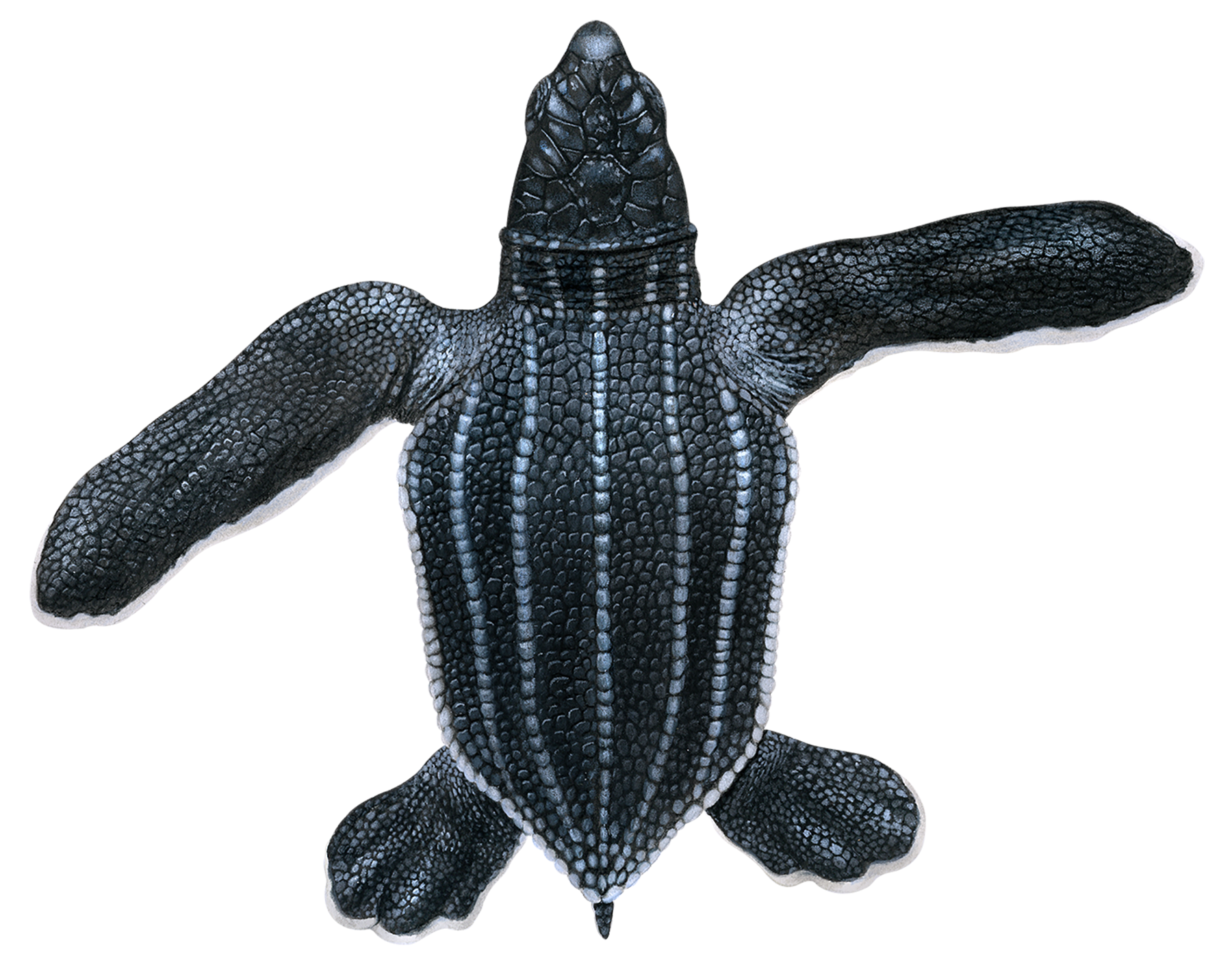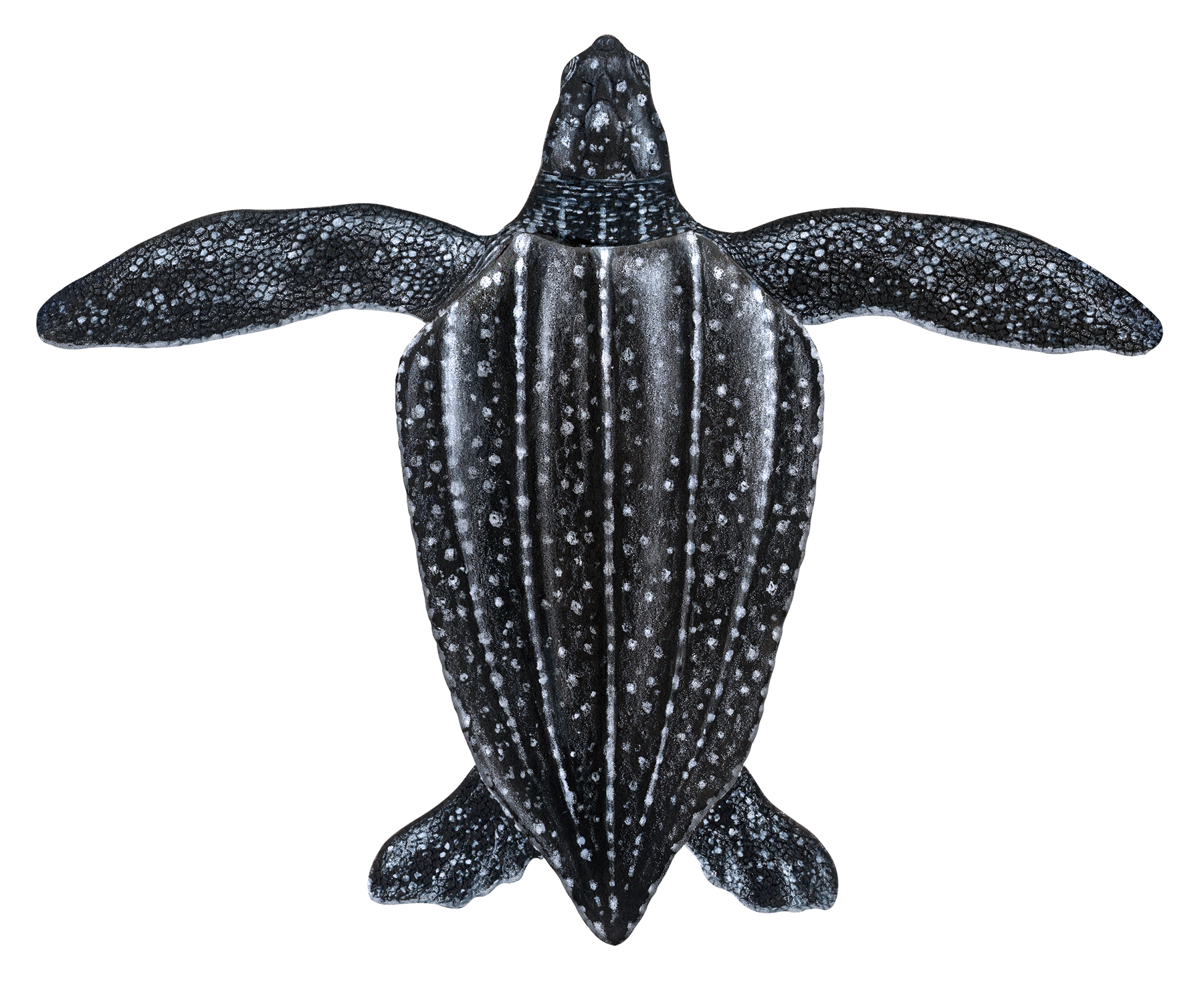Leatherback Sea Turtle (Dermochelys coriacea)
The largest sea turtle species, the deepest divers and the true world travelers, leatherbacks shatter every record. Unlike hard-shelled sea turtles, their carapace is thick, leathery skin, and even though leatherbacks are cold-blooded they have adaptations that enable them to thermoregulate which allows them to inhabit colder waters that other sea turtle species. Leatherbacks can be found in every ocean but the arctic and antarctic and are highly migratory, for example, West Pacific leatherbacks can make a 7,000 mile migratory journey within 10-12 months.
Scientific Classification
Kingdom: Animalia
Phylum: Chordata
Class: Reptilia
Order: Testudines
Family: Dermochelyidae
Species Description
Adult Weight: Females 250 - 500 kgs (551 - 1102 lbs), Males up to 900 kgs (1985 lbs). A 1,419 pound leatherback nicknamed “Bumpy” was captured and assessed during the Upwell and NOAA 2021 leatherback monitoring season.
Adult Size: 1.20 - 2.40 m ( 3.90 - 7.87 ft)
Appearance: Blunt head with visible pineal gland or ‘pink spot’, grayish black with white patches, leathery carapace with 7 ridges (5 dorsal and 2 on sides).
Diet: Jellyfish, salps, siphonophores, pyrosomes and other soft-bodied invertebrates
Life Cycle
Natural Lifespan: 100+ years
Age at Sexual Maturity: 15 years
Average Clutch Size: 60 - 90 eggs
Average Clutches per Season: 3 - 10 clutches
Nest Incubation Period: 70 days
Remigration Interval: 2 - 5 years
Habitat
Geographic Range: Tropical to sub-arctic zones in oceans worldwide.
Leatherbacks span the globe, inhabiting the waters off every continent besides Antarctica. Although they nest in tropical regions, they migrate extensively to forage. A number of thermoregulatory adaptations, including countercurrent heat exchange and insulating fat stores, enable leatherbacks to maintain warmer body temperatures in cold water.
Marine Habitat Use: Mostly pelagic but also found along continental shelves and in bays (particularly during internesting phase).
Leatherbacks mostly forage in the top 300 m (984 ft) of the water column and typically dive for 20-30 minutes at a time, but scientists have recorded leatherbacks diving as deep as 1,280 m (4,200 ft) and dive intervals of 86 minutes on a single breath.
Conservation
Over the past 50 years, the global population of leatherbacks has declined by approximately 40%. In some regions, the declines are staggering. The Western Pacific population has declined by more than 80% and the Easter Pacific population experienced declines of more than 97%.
Historically, conservation efforts have focused primarily on protecting leatherback nesting beaches. For leatherback populations to recover, protections are needed at all life stages. In addition to nesting beaches, leatherbacks must also be protected in foraging habitats and along migration routes. Efforts to broaden conservation measures will require wider stakeholder participation and coordination in recovery efforts.
-
Upwell has various research and conservation efforts targeted at leatherback sea turtle populations. Upwell is collaborating with NOAA to monitor the West Pacific population that comes to forage seasonally on the US West Coast, conducting research into the leatherback microbiome, assessing options for rewilding of East Pacific leatherbacks, participating in an ongoing study on internesting habitat use in Florida and more.
Fun Fact
Unlike hard-shelled turtles, a leatherback’s carapace can compress at depth. This feature allows leatherbacks to dive deeper than any other marine reptile, nearing records set by the deepest-diving pinnipeds: northern elephant seals.



